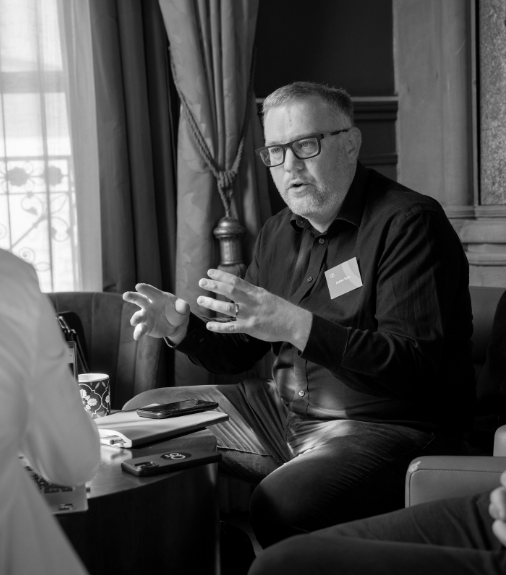
A practical guide to designing a TOM that works in the real world.
A Target Operating Model defines how an organisation should function day-to-day, not just on paper. This article explains how to design, test, and implement a TOM grounded in real-world data, ensuring it drives meaningful change across people, processes, and technology while achieving tangible business outcomes.
Reading time: 4 minutes
What is a Target Operating Model?
A Target Operating Model is the blueprint that defines how an organisation should work. In this article we will look at how to develop one that is defined in terms of how things happen day-to-day rather than just being a set of boxes in a slide deck.
The challenges of designing a Target Operating Model
Designing a Target Operating Model is not the same as designing a house, mainly because it has those pesky humans involved. Inorganic systems like an air conditioning system or gravity act in a predictable manner and so the execution gap between deciding to do something and doing the thing is just a matter of expertise and resources.
Organisations on the other hand have people with hopes and dreams and gripes and mortgages. They also have competing organisations – “the enemy gets a vote” as the slightly militaristic saying goes. Maybe there is a future in which quantum computing becomes so powerful we can predict the behaviour of these organic systems we call “colleagues” or indeed AI will take over and do away with us altogether.
For the time being however business leaders need to master the imperfect science of orchestrating how people, processes and technology come together to achieve whatever they’re trying to achieve.
So how to go about this?
Developing a Target Operating Model
- Define a clear set of objectives – organisations are too complex to try and make everything work perfectly at once. It’s therefore critical to ruthlessly prioritise the key problems you are trying to solve.
- Data collection and analysis – to determine how your organisation should work you need to understand how it currently works. This can be done through measuring activity and connecting it to the broader organisational structure. You can collect activity information either by asking people in surveys or by extracting survey from the systems that underpin your business processes.
- Design the future – quantifying what is currently happening will allow you to examine how effort is being expended and the interfaces that are causing problems. Underpinning your future Target Operating Model with data means it is more than just boxes on a page. You can model the volume of different components you will require to deliver the outcomes you are trying to achieve.
- Test – there are several different ways to test an operating model from spreadsheet based to scenario modelling to AI-driven simulations. What works on paper and what works in reality are two very different things so testing helps to bridge the gap. Involving those who are impacted will create a shared view of the implementation risks and a consensus on how best to mitigate them. If people are bought in they will stop them materialising.
- Deliver – changing an operating will involve several initiatives that all require careful monitoring to ensure implementation does not stall and that the expected Return On Investment is being achieved. The tendency is for leaders to focus heavily on strategy and design which often leads to the benefits not being realised.
Conclusion
Target Operating Models are conceptual by definition. They are ‘models’ after all. By building them based on real-world data they can be made tangible and define the framework of how an organisation should work. This then enables real changes and real improvements to be made.
We are all about organisational health, which separates good organisations from the great. Whether our clients are at the top of their game (and want to remain there) or are in ‘turnaround’ mode, we all need to work on our organisational health.
Whatever the situation, be it a strategic conundrum, a market opportunity, or an operational gripe, we combine the art and science of organisational health to help our clients improve and excel.
Please visit the firm link to site



